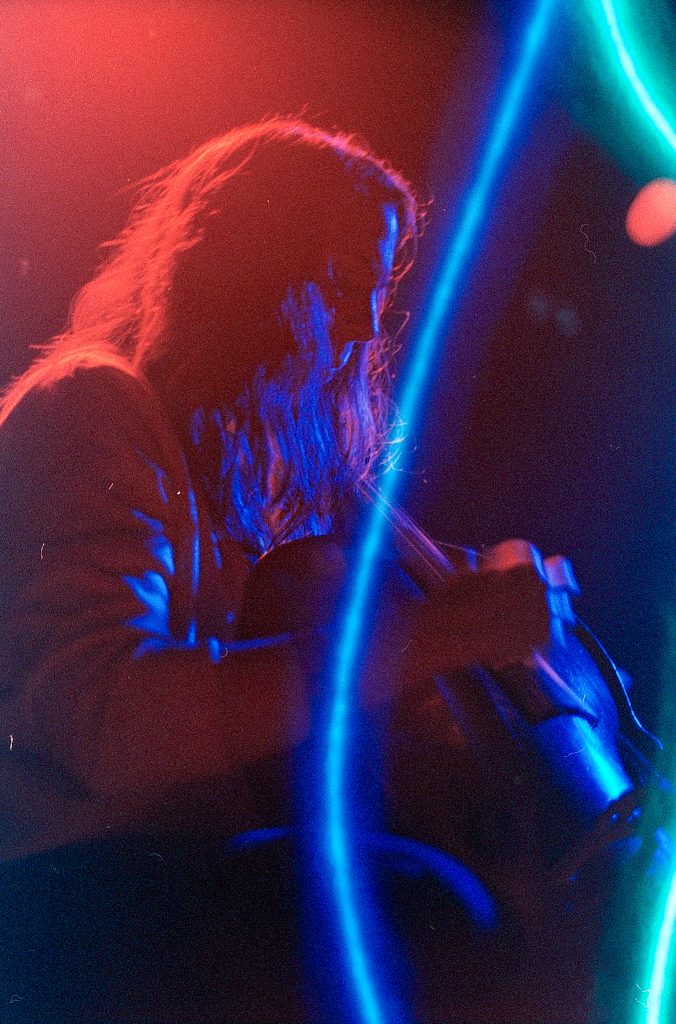Lazer offers double fun with bright green and neon blue lines that connect throughout the film.
Film: 35mm
Type: Colour Negative
Exposures: 36
ISO: 200

Lazer film was the first film that we released after we graduated from photography school. We really weren’t sure if our initial idea would work and were delighted to find out it did.
The main characteristic of Lazer film are the intensive green and blue lines that run horizontally throughout the film, even covering the sprockets.
Try shooting a full roll in Landscape format: when you get the picture printed the lines will connect throughout the entire roll, making a great panorama to decorate your walls with!
“Revolog’s 35mm film stock are the most creative I’ve ever used. I first laid eyes on them in the Lomography store in Beijing. I purchased all of them, and thumbed through their booklet. The results are random, which is what makes Revolog so much fun.
With the lazer film, you don’t know where the lines will run. It’s unpredictable. With streak, the film turns out to appear aged and scratched. Sometimes the film will suit the context of the photo appropriately, while at other times gives it a bizarre and alien vibe. Either way, shooting with Revolog, and shooting film photography in general, is a way to capture specific moments in time, under the natural veil of eyesight.”
Mark Zuiderveld
Over / Under Exposure

The effect of the film is visible both in underexposed and in overexposed images. In underexposed images the effect can be extremely strong, and the white balance of the film might change. Be careful with underexposure in order to not lose important parts of your picture due to the strong effect.
Some labs might have a problem with the white balance and your images might have a magenta hue; this can easily be corrected with automated color correction in standard picture editing software (even on your phone!).

without color correction 
with color correction
Going experimental – Lazer film cross processed
Cross processing is a technique, where you develop film in a chemical that is not intended to be developed in. Usually that means developing slide film in negative film chemistry (C-41), but it can also be done the other way around, developing negative film in slide film chemistry (E-6).
When you develop colour negative film in E-6 chemistry there is the disadvantage of the orange hue that comes from the orange colour “mask” which was designed to help in the printing process. If you decide to cross process a colour negative film it is wise to have a film scanner handy, as you might be able to tweak the colour of the processed negative in your preferred way.
The following example was taken on an overcast day in April in Styria with a Minolta AF-7000 camera at normal exposure.
Lazer film was the first film we used to try out cross-processing, and as the camera settings were set to slight overexposure on half of the roll, we were a bit unhappy when we received the scans from the lab because in the overexposed photos we were almost unable to make out any details in the picture. The normally exposed photos were usable.

Lab Scan 
Silverfast Scan
The scans we received from the lab had a strong orange hue that covered all of the pictures, but the details are still visible and the effect appears stong. The auto-color corrected rescans that we made with our Epson V750pro and Silverfast software are low in contrast, but are absolutely usable.
Lazer film tends to work beautiful with nature images, giving them a surreal, outer-space look.
Of course there’s no limit on how you can use Lazer film. If you have special pictures taken with this film share it using #revolog_lazer on social media!
Want to give Lazer film a try? With the code TRYLAZER you’ll get 20% off of Lazer film in our shop until May 31st 2020.



























